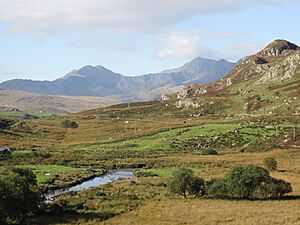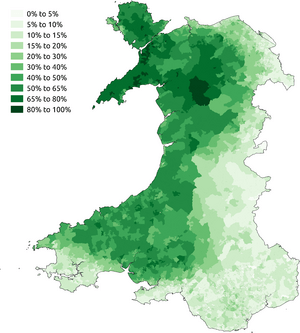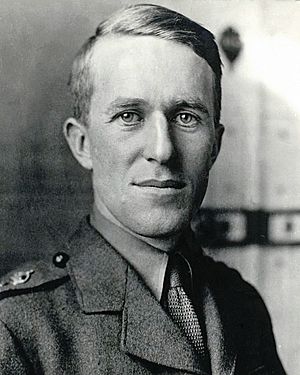Gwynedd facts for kids
Quick facts for kids
Gwynedd
|
||
|---|---|---|
|
County
|
||
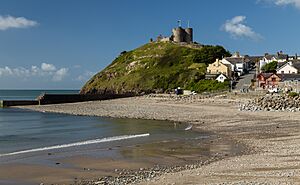
|
||
|
||
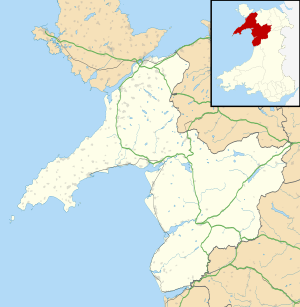
Location map of the modern county in Wales
|
||
| Sovereign state | ||
| Country | ||
| Preserved county | Gwynedd | |
| Established | 1 April 1996 | |
| Admin HQ | Council Offices, Caernarfon | |
| Largest city | Bangor | |
| Government | ||
| • Type | Principal council | |
| • Body | Gwynedd Council | |
| Area | ||
| • Total | 2,535 km2 (979 sq mi) | |
| Area rank | 2nd | |
| Population
(2015)
|
||
| • Total | 122,900 | |
| • Rank | 14th | |
| • Density | 48/km2 (120/sq mi) | |
| • Density rank | 20th | |
| • Ethnicity | 99.0% White | |
| Welsh language | ||
| • Rank | 1st | |
| • Speakers | 64.4% | |
| Geocode | 00NC (ONS) W06000002 (GSS) |
|
| ISO 3166 code | GB-GWN | |
Gwynedd is a county located in the north-west part of Wales. It shares borders with Anglesey to the north and the Irish Sea to the west. The largest city in Gwynedd is Bangor, and its main administrative office is in Caernarfon.
Gwynedd is the second largest county in Wales by area. However, it does not have a very large population. It covers about 2,535 square kilometers (979 square miles) and has around 117,400 people. After Bangor, the biggest towns are Caernarfon, Bethesda, and Pwllheli.
This county is special because it has the highest number of Welsh speakers in Wales. About 64.4% of people here speak Welsh. This makes Gwynedd a very important place for the Welsh language.
The land in Gwynedd is mostly mountainous, with a long coastline. A big part of the county is covered by Snowdonia National Park. This park is home to Snowdon (Yr Wyddfa), which is the highest mountain in Wales. The Llŷn Peninsula in the west is flatter and known for its beautiful coast. Gwynedd also has some of Wales's largest lakes, including Bala Lake (Llyn Tegid).
The area of Gwynedd has a rich history. It was once the center of the Kingdom of Gwynedd. This kingdom stayed independent from England until the late 1200s. King Edward I built famous castles like Caernarfon and Harlech here. These castles are now part of a World Heritage Site. Later, the slate industry grew very quickly. In the late 1800s, the Penrhyn and Dinorwic quarries were the biggest in the world. The Slate Landscape of Northwest Wales is also a World Heritage Site today.
Contents
What's in a Name?
The name Gwynedd has a long history. Some historians believe it means 'collection of tribes'. This idea comes from old Celtic words. It might be linked to ancient Irish words for 'tribe' or 'warriors'.
Irish people settled in north-west Wales a long time ago. The Latin name for the area was Venedotia. Around the year 500 AD, a stone was found that said: "Here lies Cantiorix, citizen of Gwynedd."
The native people of Wales kept this name for their kingdom. It was used until King Edward I conquered the area. When the modern county was created in 1974, this historic name was brought back.
A Look at Gwynedd's Past
Gwynedd was an independent kingdom for many centuries. It became part of England in the 13th century. The modern county of Gwynedd was created on April 1, 1974. This was part of a big change in local government in Wales.
The 1974 county included all of Anglesey and Caernarfonshire. It also covered most of Merionethshire. The county was divided into five smaller areas called districts. These were Aberconwy, Arfon, Dwyfor, Meirionnydd, and Anglesey.
In 1996, the way local government worked changed again. The 1974 county of Gwynedd was split up. Anglesey became its own independent area. Aberconwy became part of the new Conwy County Borough.
The rest of the old Gwynedd county became a new area. It was first called Caernarfonshire and Merionethshire. But soon after, the local council decided to rename it Gwynedd. This is the Gwynedd we know today.
The old boundaries of Gwynedd (before 1996) are still used for some special purposes. For example, they are used for the Lieutenancy. This means the Queen's representative for the area still covers both Gwynedd and Anglesey.
A police force called Gwynedd Constabulary was formed in 1950. It combined the police forces of Anglesey, Caernarfonshire, and Merionethshire. Later, it merged with other forces and was renamed the North Wales Police. This was to avoid confusion with the new local government areas.
The Snowdonia National Park was created in 1951. After the 1974 changes, the park was entirely within Gwynedd. Today, parts of the park are also in the Conwy County Borough. The park is managed by a special authority.
Many people have moved to Gwynedd, especially from England. In 2021, about 66.6% of people living in Gwynedd were born in Wales. About 27.1% were born in England.
How Gwynedd Makes a Living
Gwynedd has a mix of different types of jobs and businesses.
Tourism and Visitors
Tourism is a very important part of the economy. Many people visit Gwynedd for its beautiful beaches and mountains. A large part of the county is inside the Snowdonia National Park. This park attracts many tourists. However, tourism jobs are often seasonal, meaning there are fewer jobs in the winter.
Farming and Traditional Industries
Farming is still important, but fewer people work in agriculture now than in the past. The traditional slate industry was once huge. Today, only a small number of people work in the slate quarries.
New Industries and Education
Newer industries have also grown in Gwynedd. For example, there are TV and sound studios. The record company Sain has its main office here.
The education sector is also very important. Bangor University is located in Gwynedd. There are also Further Education colleges like Coleg Meirion-Dwyfor and Coleg Menai. These colleges are now part of Grŵp Llandrillo Menai.
Welsh Language in Gwynedd
Gwynedd has the highest percentage of Welsh speakers in all of Wales. In the 2021 census, 64.4% of people aged three and over said they could speak Welsh. This was the same percentage as in the 2011 census.
It is thought that most Welsh speakers in Gwynedd are fluent. This is the highest percentage of fluent speakers in any county in Wales. Young people aged 5 to 15 have the highest number of Welsh speakers in Gwynedd. In 2011, 92.3% of them could speak Welsh.
Between 1991 and 2001, the number of Welsh speakers in Gwynedd went down slightly. However, the number of Welsh speakers across Wales as a whole increased during that time.
Recent surveys suggest that even more people in Gwynedd can speak Welsh now. As of March 2023, about 77.0% of people aged three and above could speak Welsh.
Famous People from Gwynedd
Many notable people have connections to Gwynedd:
- Edward II of England (1284–1327) was born in Caernarfon Castle.
- Bertrand Russell (1872–1970), a famous philosopher, lived in the village of Plas Penrhyn.
- David Lloyd George (1863–1945), who became Prime Minister, lived in Llanystumdwy from a young age.
- Clough Williams-Ellis (1883–1978) was the architect who designed the unique village of Portmeirion.
- T. E. Lawrence (1888–1935), known as "Lawrence of Arabia," was born in Tremadog.
- Hedd Wyn (1887–1917), a poet, was from Trawsfynydd and died in World War I.
- Sir Bryn Terfel (born 1965) is a world-famous opera and concert singer from Pant Glas.
- Sir Dave Brailsford (born 1964), a well-known cycling coach, grew up near Caernarfon.
- Sasha (born 1969), a famous DJ, was born in Bangor, Gwynedd.
- Duffy (born 1984), a popular singer and songwriter, was also born in Bangor, Gwynedd.
- Wayne Hennessey (born 1987), a football goalkeeper for the Wales team, was born in Bangor, Gwynedd.
See also
 In Spanish: Gwynedd para niños
In Spanish: Gwynedd para niños



